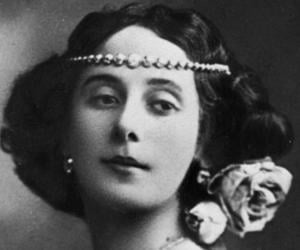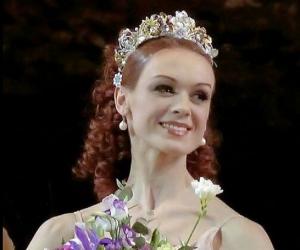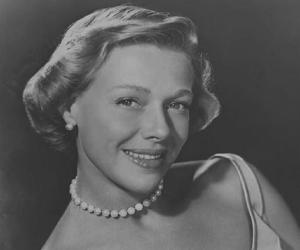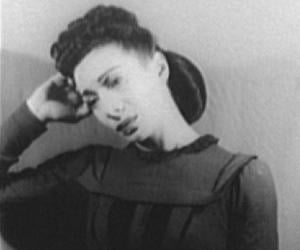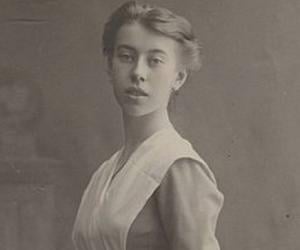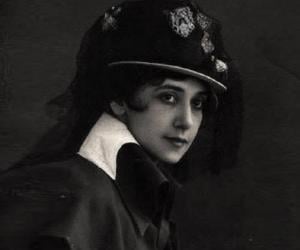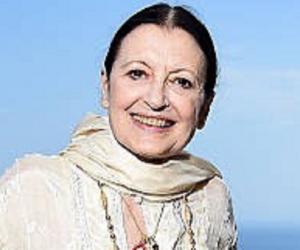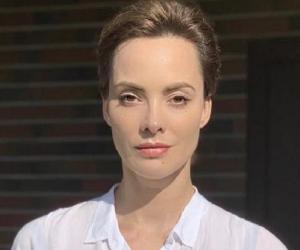Quick Facts
Also Known As: Anna Matveyevna Pavlova
Died At Age: 49
Family:
Spouse/Ex-: Victor Dandré
mother: Lyubov Feodorovna
Born Country: Russia
Ballet Dancers Russian Women
Died on: January 23, 1931
place of death: The Hague, Netherlands
Cause of Death: Pleurisy
Notable Alumni: Imperial Ballet
City: Saint Petersburg, Russia
More Facts
education: Imperial Ballet
Childhood & Early Life
She was born to an unwed mother, Lyubov Feodorovna who was a laundress. Her biological father was rumored to be the banker Lazar Polyakov. Her mother later married Matvey Pavlov who adopted the little girl as his own daughter.
Young Anna became fascinated with dancing after watching a performance of ‘The Sleeping Beauty’. Inspired, she auditioned for the famous Imperial Ballet School where she was accepted in 1891 at the age of ten.
She had severely arched feet and long, thin limbs which made training difficult. But she was not discouraged and spent long hours practising and improved her technique under the coaching of renowned teachers like Christian Johansson, Enrico Cecchetti and Nikolai Legat.
She graduated from the Imperial Ballet School in 1899 at age of 18.
Career
Her official debut was at the the Mariinsky Theatre in Pavel Gerdt’s Les Dryades pretendues in 1899. Her performance was greatly appreciated by the great critic and historian Nikolai Bezobrazov.
She was a very gifted ballerina and could perform in various classical variations such as pas de deux and pas de trios. Through her hard work and grace she became a favourite of the old maestro Petipa who selected her to play the title role in ‘Paquita’.
She rose through the ranks quickly and became danseuse in 1902 and premiere danseuse in 1905, and was eventually named the prima ballerina in 1906. Her popularity soared and her fans started calling themselves the Pavlovatzi.
She suffered from rigid feet and thus added a piece of hard wood to the sole of her pointe shoe to strengthen it. This was considered cheating during those times though it formed the basis for the creation of the modern pointe shoe.
In 1905, she performed the lead solo in Michael Fokine’s ‘The Dying Swan’ which had music by Camille Saint-Sa�ns. Her frail and supple body allowed her to perform the delicate movements to perfection and this role came to be known as her signature role.
With the passage of time she began choreographing several solos herself. She wore a gossamer gown and large dragonfly wings while performing in the ballet ‘The Dragonfly’ for which she also acted as the choreographer.
She was known to embark on long and grueling tours across the world to perform. Her first tour was in 1907 when she traveled all over Europe along with a group of dancers and performed in Berlin, Copenhagen, Prague among other major cities. The tour was highly successful.
She joined Sergei Diaghilev’s Ballet Russe on its tour in 1909. The company frequently visited Australia and the dancers had a deep influence on the future of Australian dance. She toured the United States and the United Kingdom during 1910.
The year 1911 was an important one for the ballerina. She founded her own company which allowed her to retain complete creative control over the performances. Along with her company she tirelessly toured all over the world for the next several years.
Major Works
She is best known for creating the role of ‘The Dying Swan’ in the ballet of the same name. The ballad follows the last moments of the life of a swan which Pavlova portrayed with her delicate body movements and intense facial expressions. Considered her signature performance, she performed the dance around 4,000 times.
Personal Life & Legacy
She is believed to have married her manager and companion, Victor Dandre. This fact was never confirmed from her side as she kept her personal life a closely guarded secret.
She gave several charity performances to support Russian orphans of war. She adopted 15 girls into a home she had purchased and supported them with her earnings and donations from the Camp Fire Girls of America.
She was a passionate animal lover and had many pets including dogs, cats, birds and swans.
She contracted pneumonia during a tour and was advised to have an operation. However she was informed that she would not be able to dance after the surgery. The dancer chose to die rather than giving up what she loved most. She decided not to have the surgery and died in January 1931.
Facts About Anna Pavlova
Anna Pavlova was known for her love of animals, particularly swans. She had a pet swan named Jack that traveled with her on tour.
Pavlova was a pioneer in advocating for the importance of proper nutrition for dancers. She believed that a balanced diet was essential for maintaining peak performance.
She was known for her kindness and generosity towards others, both within and outside of the dance world.
Pavlova was a trailblazer for ballet as an art form, helping to popularize it around the world and bring it to new audiences.
She was instrumental in breaking down barriers and stereotypes about ballet dancers.
Pavlova had a deep spiritual connection to dance, often describing it as a form of expression that transcended language and culture.
She believed in the power of dance to communicate emotions and tell stories in a way that words could not.


